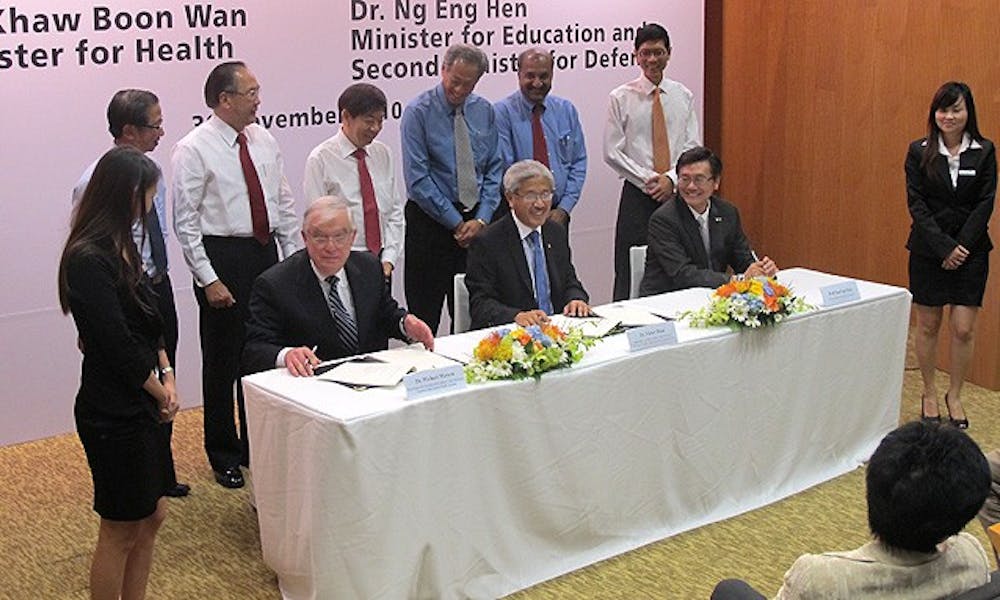Although its first class will not graduate until May, the Duke-National University of Singapore Graduate Medical School has entered a new era in which it will partner with a company to improve research and healthcare delivery.
University officials met with representatives from the National University of Singapore Nov. 30, 2010 and decided to enter the second phase of their collaboration. The transition—which is occurring nearly two years ahead of the scheduled end of the first phase—signals the substantial confidence that stakeholders have placed in the school’s success, said Professor Ranga Krishnan, the dean of the school.
Since the start of construction in 2006, Duke-NUS has focused on developing its infrastructure, but it will now begin to focus primarily on working with the SingHealth company to further develop and improve its capabilities. The school’s second phase is expected to last five years.
The company, which is the largest healthcare organization in Singapore, will provide its expertise in the biomedical sciences industry to quicken scientific discoveries, emphasize patient care and collaborate with other aspects of the University.
“Duke-NUS in Phase 2 will leverage on the excellent infrastructure that is already in place to further expand and integrate education, research and clinical care,” Krishnan wrote in an e-mail.
Duke-NUS was established in 2005 as a collaboration between Duke and the National University of Singapore. The partnership reflects Duke’s desire to expand globally, as well as the National University of Singapore’s desire to offer medical training based on an American model.
Currently, medical schools following the American model of education are rare in Southeast Asia.
“Students in Southeast Asia are more familiar with the British system of medical education [than the American one],” said junior Ming Jiu Li, who is from Singapore. “This means that there is no pre-med option, and students immediately enter a school of medicine upon graduation from high school.”
Indeed, Duke-NUS represents an important new milestone for medical education internationally—in many respects, it is the first school of its kind in Singapore, Krishnan said. The school’s graduates will receive a joint Doctor of Medicine degree from both Duke and NUS.
“[Duke-NUS] is the first medical school in Singapore to follow the American model of post-baccalaureate medical education,” Krishnan said.
The continued partnership is already yielding benefits for both Duke and the National University of Singapore that will extend long beyond the end of the new phase in growth.
“Through Duke-NUS, there is increased synergy as well as a more active exchange of ideas, knowledge and research between the schools,” Krishnan said. “Our programs have been complementary and have greatly enhanced the research in both locations.”
Ultimately, one of the greatest benefits that Duke receives from the partnership may be increased name recognition abroad.
“Duke didn’t have much name recognition [in Singapore] before, at least when I applied to Duke in December 2006,” Li said. “It’s definitely catching on, though, judging by the number of Singapore’s students who apply to and have enrolled at Duke in recent years.”
Starting the collaboration with SingHealth is not the only upcoming milestone for Duke-NUS. The first class, which was composed of just 26 students chosen from more than 300 applicants in August 2007, will graduate this May.
Krishnan said that students are excited to begin their careers.
“[The students] are definitely looking forward to being able to serve the public when they graduate,” he said.
Get The Chronicle straight to your inbox
Signup for our weekly newsletter. Cancel at any time.

